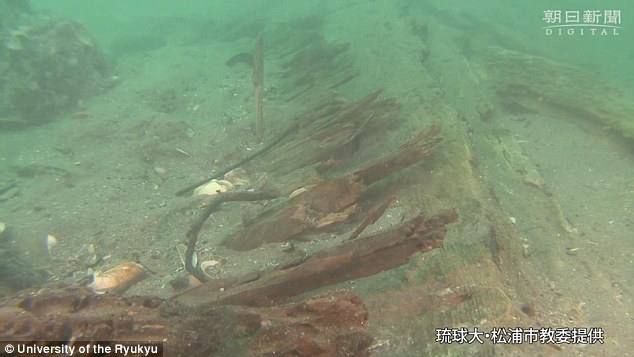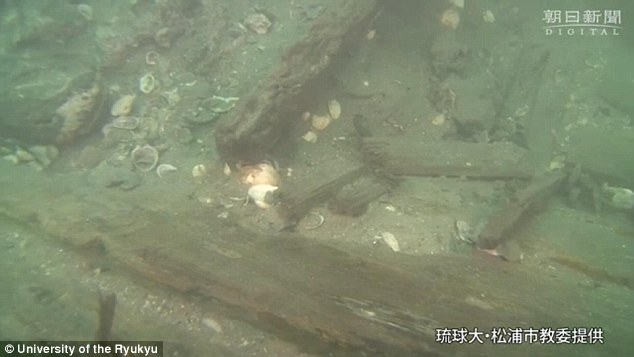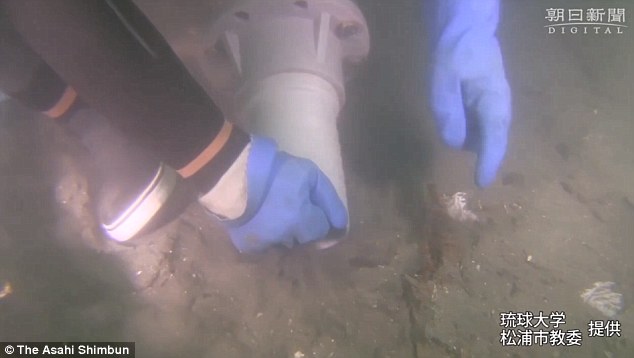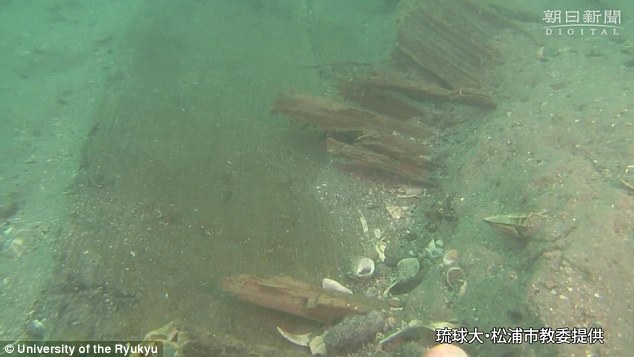
Dispatched by Genghis Khan's grandson Kublai, it formed part of two massive armadas - made up of 4,000 ships and 140,000 men - tasked with invading the island and expanding the legendary Yuan Dynasty in 1274 and 1281.
But both fleets were destroyed by destructive typhoon winds which have gone down in Japanese history as 'kamikaze' - or the divine wind - which saved the country from foreign invasion.
It was found in a bay close to the city of Matsuura on the west coast of Kyushu island - and archaeologists believe it was taking shelter from the storm when it sunk.
This is the third sunken ship from the armada to be discovered by archaeologists from the University of the Ryukyus, who found the last one around 200m from Takashima Island in October 2014.
The latest is estimated to be around 20m from bow to stern and up to seven metres wide - slightly smaller than the first ship.
The second ship to be discovered on the seabed yesterday is 12m long and 3m wide at its longest point.
The first Mongolian warship was discovered in 2011 around 1.7km west of the wreck found last year.


A professor of archaeology at the University of Ryukyus says his team have now found potential shipwrecks from the same invasion at three different locations.
Yoshifumi Ikeda told Asia and Japan Watch: 'We have successfully confirmed the two ships from the Mongolian invasion and further research on them is expected to lead to the discovery of even more sunken Mongolian ships.'
Numerous artifacts have been found on the seabed in the Takashima Kozaki archaeology. They include a white porcelain bowl, brown glaze pottery vase, roof tiles and ironware, have been discovered in and around the wreck, the researchers said.




Reader Comments
to our Newsletter